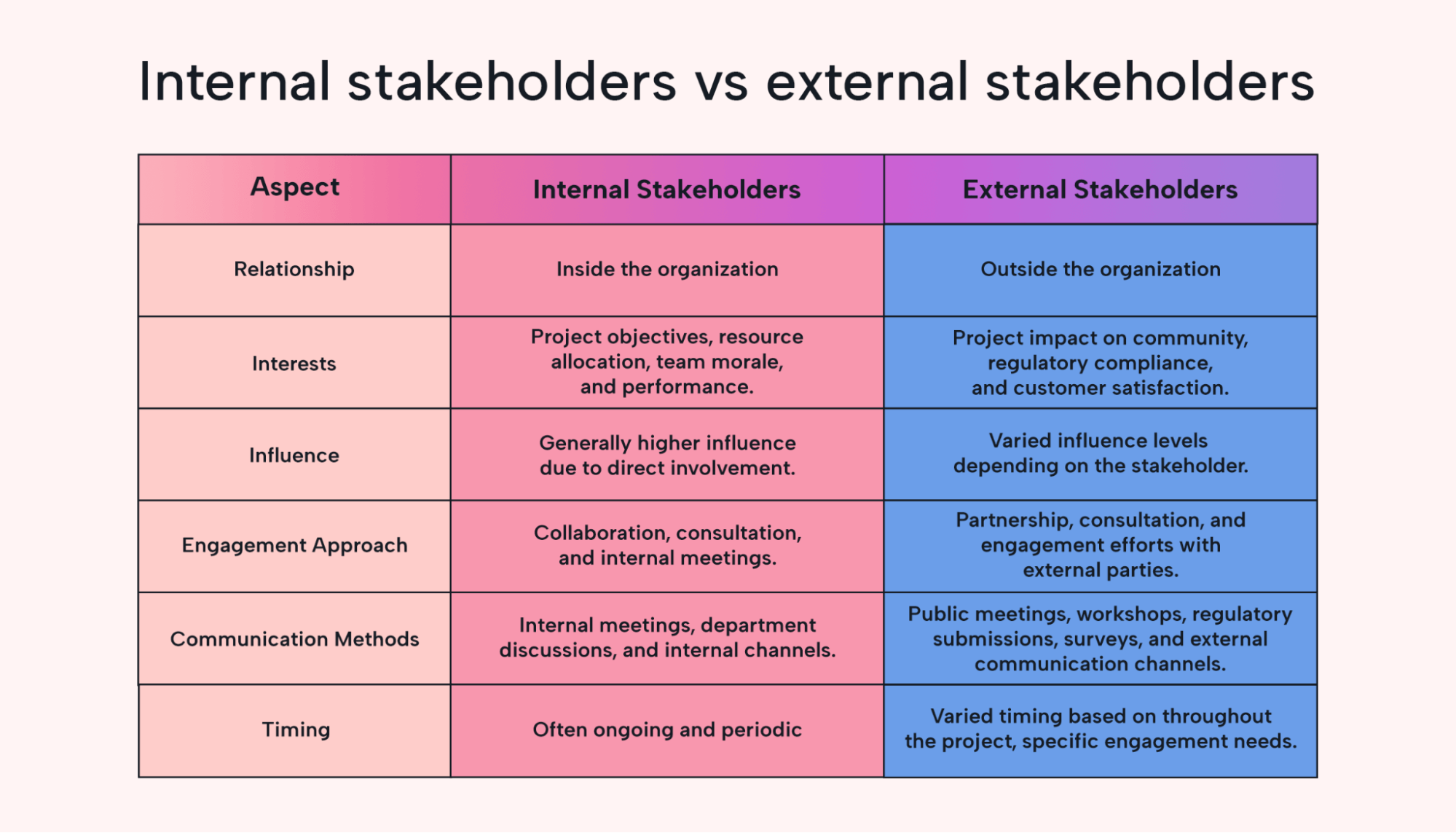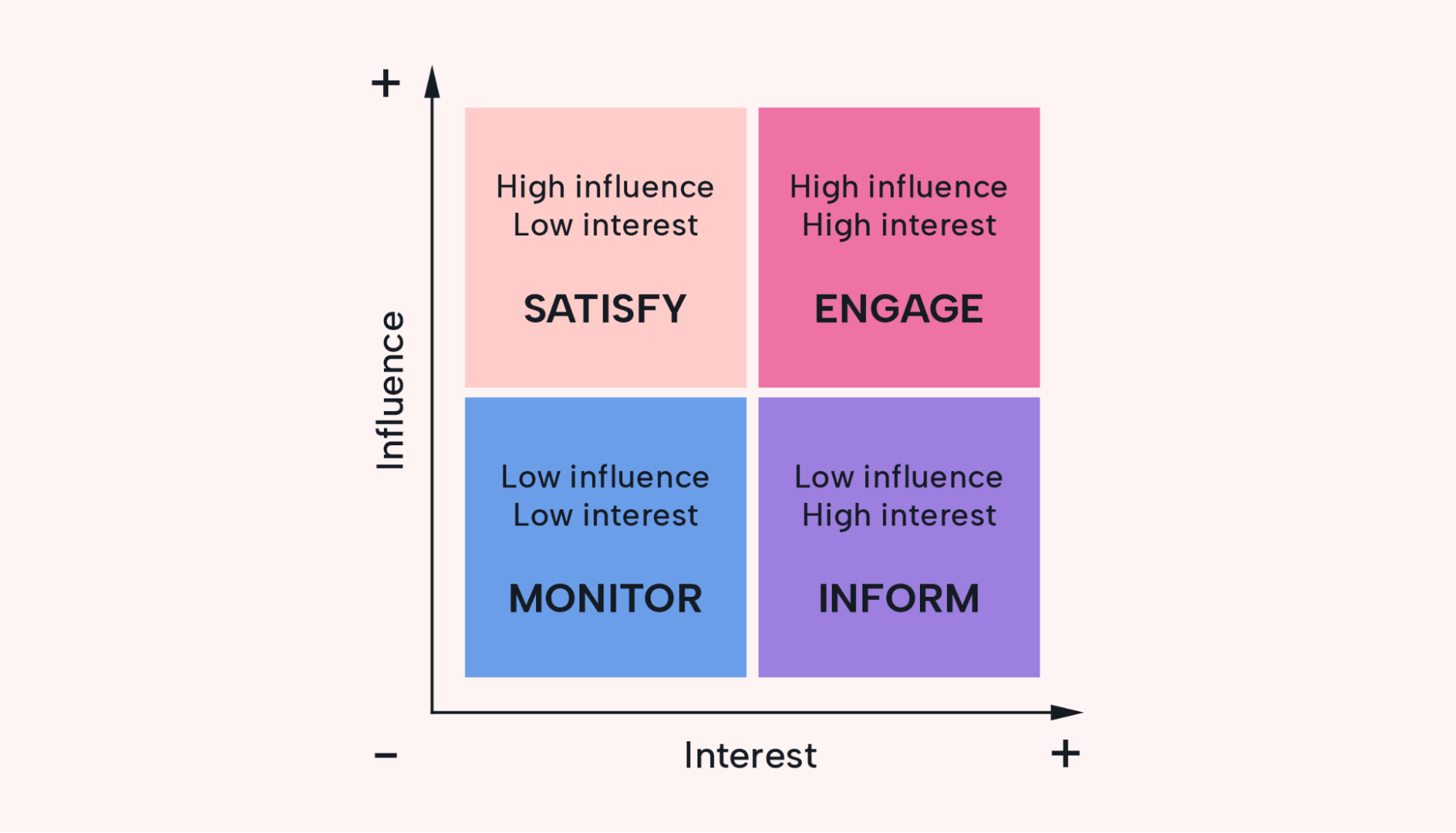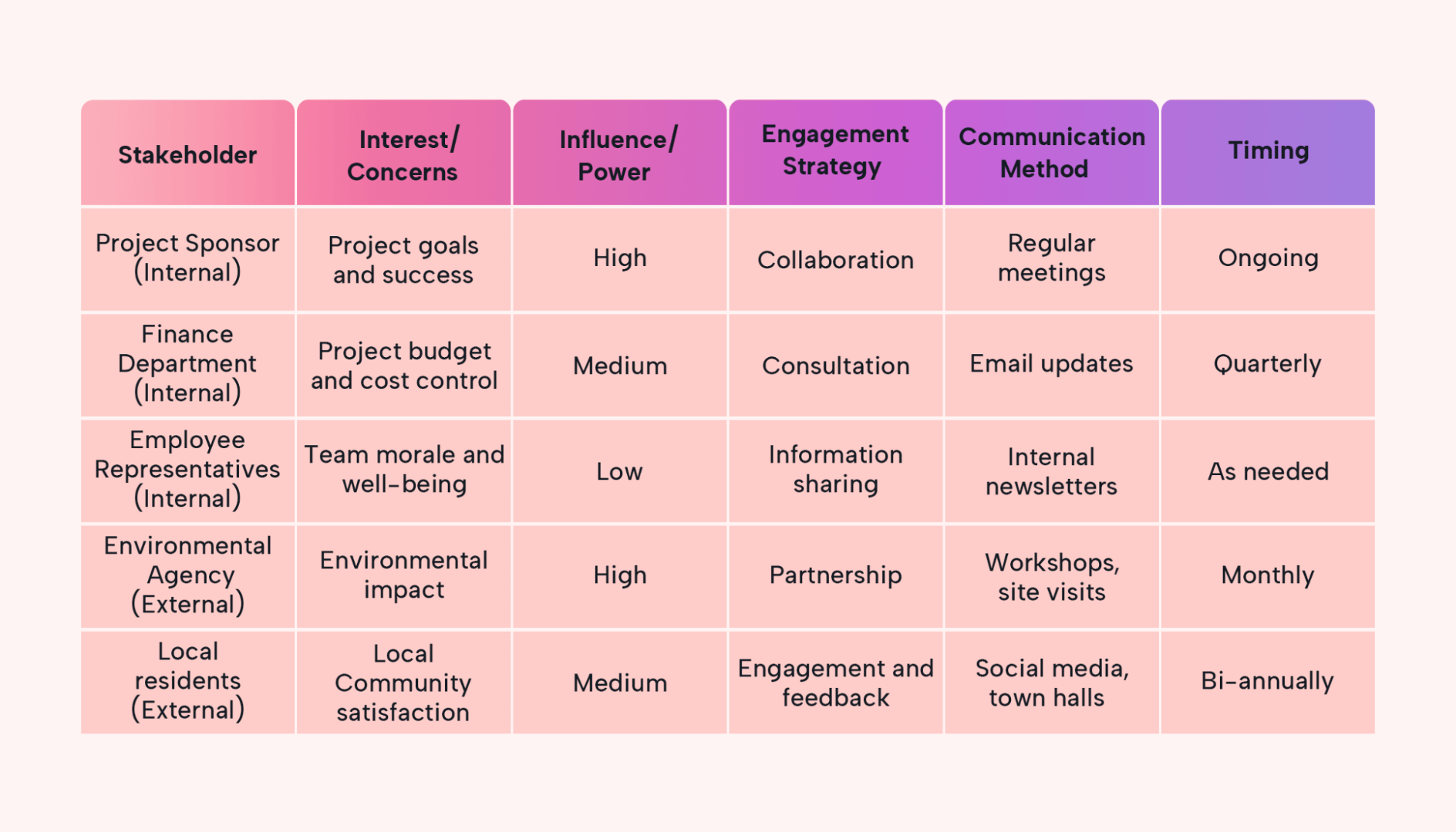Do you find your business struggling to engage with all the people involved? Does your team seem like they are in perpetual panic or uncertainty? How about your clients, do they even know that you exist?
Clear (consistent) communication helps to keep everyone who's part of your project either excited or informed. Without good communication, you're not setting clear expectations. Collaboration can become haphazard, and project outcomes unpredictable. It's a problem that eats away at productivity, profitability, and, at times, your peace of mind.
Speaking of communications, the Project Management Institute (PMI) contends that it is one of the four most essential power skills that help project professionals fulfill organizational objectives. In this article, we'll review the four steps to creating a valuable and impactful stakeholder engagement plan.
What are stakeholders?
Stakeholders are individuals and groups with a vested interest and influence in your projects or what your company does. Their interest typically lies in the company's objectives, and overall prosperity. Some examples are investors, creditors, managers, and the employees who keep the wheels turning.
The relationship that stakeholders have with your business is a two-way street. It's a dynamic relationship where their actions and your project or business shape the outcome together.
Internal stakeholders vs. external stakeholders
Stakeholders may fall into two categories.
Internal stakeholders are your in-house people and include:
- Project sponsors provide the necessary support, resources, and guidance as they are typically the full or partial owner of the project.
- Project managers help to keep the project on track, on time, and within budget by managing the project scope and team. They also get their hands dirty when needed to help push work through. They do the detailed project planning and track the work while also managing resources, clients and any other technicalities.
- Project team members (or development team members) are the ones rolling up their sleeves and putting in the hard work to turn plans into reality.
 |
On the flip side, external stakeholders are, well, external parties who have a stake in your project but aren't part of your project's “inner circle.” They include:
- Government bodies enforce government regulations and policies that can impact your project.
- Contractors from outside your organization, such as suppliers, contractors, or service providers.
- Customers hold a unique (and valuable) position as external key stakeholders. Their satisfaction and feedback can make or break the success of your project or business.
- Competitors are also external stakeholders, as they can help you learn about new trends.
Since stakeholders have the power to influence your business or projects, you'll need a plan for how to engage them.
What is a stakeholder engagement plan?
A stakeholder engagement plan (SEP) is like a communication playbook. It's a “living” document that contains the strategy for how you intend to communicate with your stakeholders.
The purpose of this document, alongside a project plan, is to get financial and business support for a project or venture.
In practical terms, a stakeholder engagement plan is your communication compass.
While project teams usually create engagement plans before starting a project, they're not set in stone. Why? Because the level of engagement and interest can vary for each stakeholder, especially as the project progresses.
Since the SEP is a living document, you can adjust your communication approach to suit each stakeholder's unique needs and accommodate changes.
A SEP goes well with a stakeholder analysis.
The stakeholder analysis helps you identify project stakeholders and what makes them tick. The engagement plan guides your communication with them.
Key elements you need before writing a SEP
Because the SEP is usually created after the project charter (and other project artifacts), you can steal information from them to help with your SEP.
Here's a look at what you can use:
- Scope gives you a clear understanding of what is included in the project (in scope) and what isn't (out of scope). This delineation can help you identify who the relevant stakeholders are and what their interests might be.
- Constraints are the limitations within which your project must operate. These constraints (such as time or cost) can affect your stakeholder’s expectations.
- Milestones are significant points in your project's timeline. They can help you identify when and how to engage with stakeholders.
- Timelines help you show stakeholders project progress vs. schedule and project plans.
4 steps to create an effective stakeholder engagement plan
Here are four easy steps to creating your own SEP. Note that these steps are similar to what you might do for stakeholder analysis and a communication plan.
1. Identify your key stakeholders
Here's a Jedi mind trick—think of stakeholders as “customers”. And then group your customers into different categories. This will help you dive deeper into their expectations (and help you tailor your strategies accordingly).
Here are 4 buckets to group them by:
- Leaders are the heavyweights whose influence can carry the most impact. They often include internal stakeholders like the project sponsor or external players like legal bodies.
- Contributors are essential to the creation of your project or venture. They could be key suppliers, dedicated team members, or officials.
- Influencers are individuals or groups who may become engaged, either in support or opposition, as your project advances. Examples might be the media, community associations, or other organizations.
- Paying Customers are those who you serve (and pay for the product or service you produce).
2. Define the motives of your stakeholders
With each stakeholder now identified, you now need to define their motivations. It's important that you understand why and how they're involved in the project so you can plan how to engage them.
To do this, place yourself in their shoes and ask yourself these questions:
- For leaders, paying customers, and contributors: What outcome are they expecting from the project? Does it align with the outcome you are going to provide? Are they looking for financial gain, improved efficiency or service, or maybe other benefits?
- For influencers: What could prompt them to become involved? What would be their goal? To what extent would they be willing to support/oppose your project?
3. Rank them on an influence and interest grid
Next, prioritize your stakeholders on an influence/interest grid (which will help you see where to focus).
The grid is based on two factors:
- The amount of power they hold over the project
- The amount of interest they have in the project
 |
With an influence/interest matrix, sort your stakeholders into one of these four categories:
- High interest and high influence are the stakeholders that play the most significant role in your project. This category includes stakeholders from your "leaders," "paying customers," or "contributors." They require regular communication and education about your product, so they'll need the most engagement.
- High interest and low influence may also come from your "leaders" or "contributors" categories, but they have less direct influence. While they may not drive decision-making, you should keep them informed and engaged.
- High influence and low interest hold a lot of power, but your project doesn't interest them. They only need engagement from time to time.
- Low influence and low interest are the passive stakeholders with the least power or interest. While you don't need to engage them often, it's good practice to send them occasional updates.
4. Create your engagement strategy
With your stakeholder analysis complete, you're ready to draft your engagement strategy.
Determine the most suitable channels to reach each stakeholder group. For instance:
- For leaders: schedule regular face-to-face meetings or video conferences.
- For paying customers and contributors: use a combination of email updates and team meetings.
- For influencers: use social media, press releases, or community events.
Then, define how often you'll communicate with each group. For example:
- For high interest and high influence, use frequent updates, such as weekly or bi-weekly meetings.
- For high-interest and low-influence, monthly or quarterly updates will work.
- For high influence and low interest, use occasional updates like project milestones.
- For low influence and low interest, you can also update them about milestones or once the project is complete.
 |
Use Motion to engage your stakeholders
Motion is an AI project management tool with features that can help you engage your stakeholders.
You can use Motion as your central communication hub for all your project-related information and engagement activities, including:
- Project status updates
- Project check-ins
- Internal stakeholder updates
- Milestones updates
- Deliverable updates
Motion's AI meeting assistant can lock in critical project team meetings. It integrates with most calendars (like Google Calendars) and finds the best time for all participants. If there is a change of plan, then it can reschedule the meetings automatically.
Sign up for your 7-day free trial.





